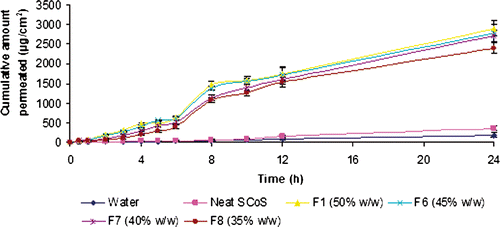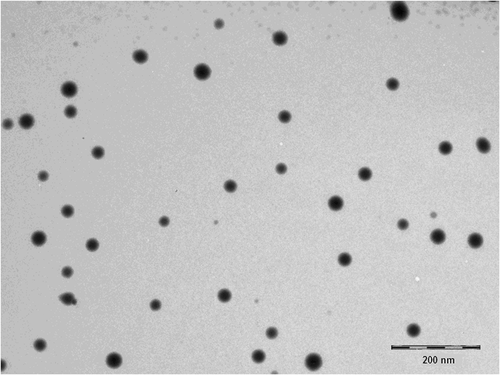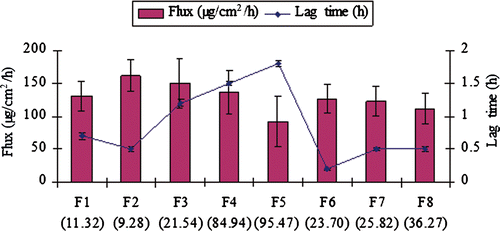Figures & data
Table 1. Solubility of carvedilol in various vehicles (oils, surfactants and water).
Table 2. The surfactant nanoemulsification efficiency (S min) and percentage transmittance for oils investigated after 24 h.
Table 3. The co-surfactants nanoemulsification efficiency (S/CoS min) and percentage transmittance for Miglyol 810® oils after 24 h.
Figure 1. Pseudo-ternary phase diagrams showing nanoemulsion existence range composed of Miglyol 810® (oil), Acconon CC6® (surfactant), water and different co-surfactants. (a) Transcutol P®; (b) Plurol Oleique®; (c) Labrasol®; (d) Cremophore RH40®; and (e) CO-20® at S/CoS 1 : 1 ratio.

Figure 2. Pseudo-ternary phase diagrams showing nanoemuslion existence range composed of Miglyol 810® (oil), Acconon CC6® (surfactant), CO-20® (co-surfactant) and water at different S/CoS ratios.
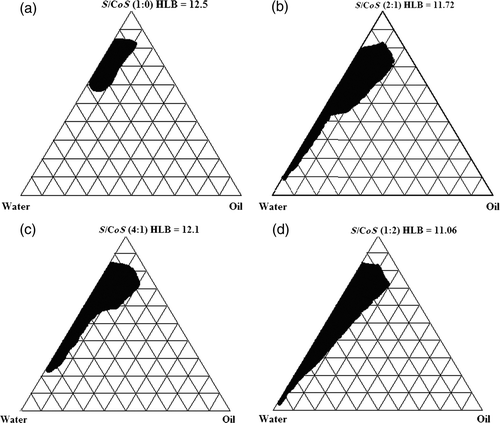
Figure 3. Nanoemulsion existence area obtained with Acconon CC6® as surfactant and CO-20® as co-surfactant at different S/CoS ratios in the pseudo-ternary phase diagrams.
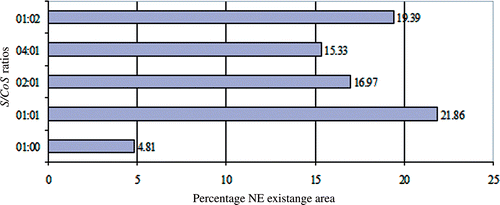
Table 4. Nanoemulsion composition selected from pseudo-ternary phase diagram of S/CoS ratio 1 : 1 and the data for evaluation parameters like mean globules size, polydispersity index (PI), viscosity, refractive index (RI), pH and percentage transmittance.
Figure 5. The effect of amount of oil present in nanoemulsion on the permeation rate of carvedilol (mean value ± SD; n = 3).
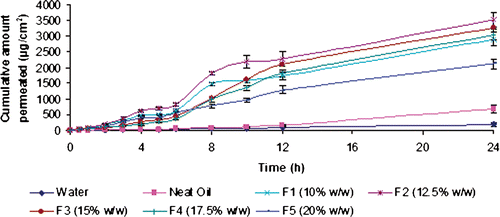
Figure 6. The effect of amount of mixture of surfactants (S/CoS, 1 : 1) in nanoemulsions on the permeation rate of carvedilol (mean value ± SD; n = 3).
